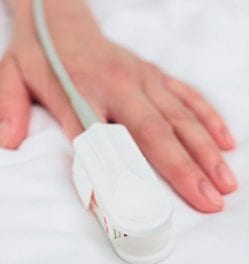Compared with conventional methods, novel polysomnography (PSG) parameters better describe how the severity of oxygen desaturation during sleep affects daytime alertness in patients with obstructive sleep apnea (OSA), according to study findings published in the European Respiratory Journal.
As researchers note, current diagnostic parameters that estimate OSA severity do not optimally relate to psychomotor vigilance in patients with the condition. Analyzing potential impairments in daytime alertness could prove vital for patients with OSA, as a prior study indicated that these populations are 2 times more likely to be involved in occupational accidents compared with normal subjects.
When examining patients with neurocognitive disorders, a myriad of domains, including learning and memory, language, executive functioning, and complex attention, are considered in determining severity. Psychomotor vigilance task (PVT), a test that assesses neurocognitive performance, assists in evaluating a patient’s ability to sustain attention by measuring repeated responses to visual stimuli.
In analyzing the efficacy of conventional diagnostic parameters (eg, Apnea–Hypopnoea Index [AHI], oxygen desaturation index [ODI]), and novel parameters (eg, desaturation severity, obstruction severity) in determining psychomotor vigilance of patients, researchers examined both approaches’ ability to predict PVT performance in a study cohort of patients with OSA (n = 743).
All apneas, hypopneas, and desaturations were scored manually per established guidelines, with all PSG recordings also scored manually by sleep technicians. Participants completed the PVT test in the evening prior to the PSG and were grouped into quartiles based on PVT outcome variables. Study authors additionally examined the odds of belonging to the worst-performing quartile.
All PVT outcome variables were analyzed via binomial logistic regression.
In the study findings, desaturations played a significant role in determining psychomotor vigilance, as a relative 10% increase in median depth of desaturations elevated the odds of prolonged mean and median reaction times and increased lapse count (odds ratio [OR]range, 1.20-1.37; P <.05). Additionally, an increase in desaturation severity was associated with prolonged median reaction time (ORrange, 1.26-1.52; P <.05). Conversely, conventional AHI and ODI were not associated with deteriorated PVT performance.
Based on analyses examining the odds of performing poorly on the PVT, female sex (ORrange, 2.21-6.02; P <.01), Epworth Sleepiness Scale score (ORrange, 1.05-1.07; P <.01) and older age (ORrange, 1.01-1.05; P <.05) were significant risk factors.
“Our results highlight the importance of developing methods for a more detailed assessment of OSA severity and comprehensive analysis of PSGs. This would enhance the assessment of OSA severity and improve the estimation of risk and severity of related daytime symptoms,” says lead study author Samu Kainulainen, MS, junior researcher at University of Eastern Finland, in a release.




